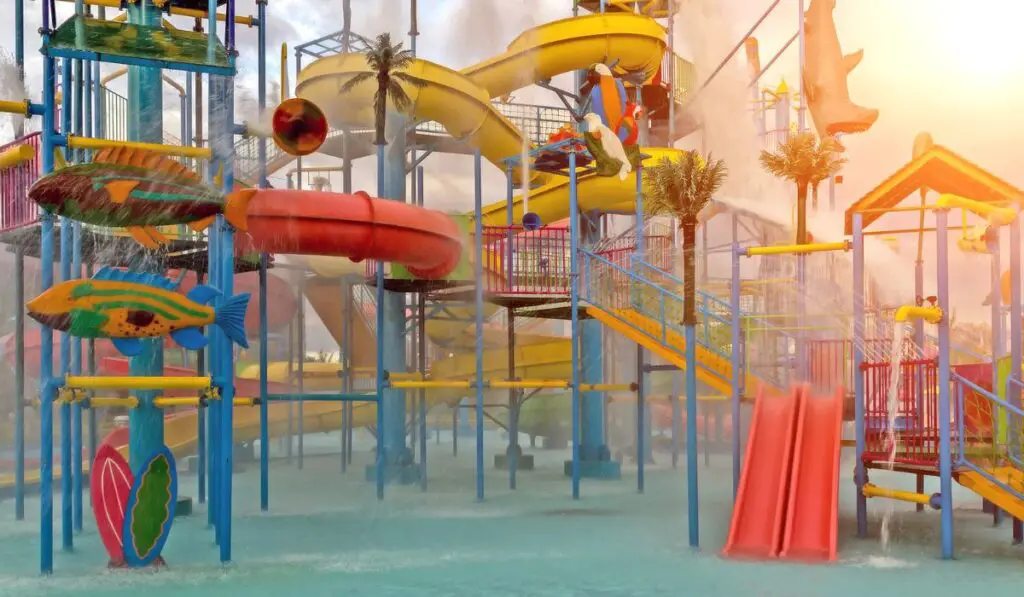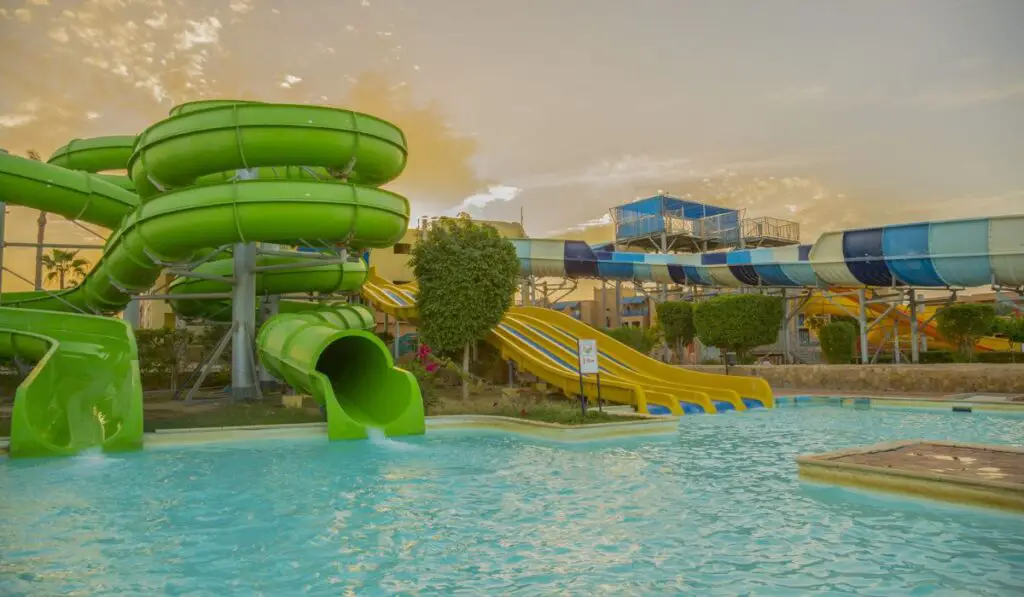We all love water parks. They’re a great way to cool off on a hot day and can be a lot of fun. But amid the climate crisis, water shortages, and increasing droughts, are water parks really a good idea? Or are they a massive waste of water?
Fortunately, water parks are quite efficient with the water they use. Around 98% of the water used in water parks is recycled and reused. Most of the remaining 2% includes water that’s lost to evaporation, a natural process. Park owners have an incentive to reduce water use, as doing so cuts costs.
Water parks may seem like a luxury, but they actually use less water than some other common activities, like watering your lawn. In fact, a family of four can use up to 300 gallons of water per day just by cleaning and cooking. In comparison, the 30 gallons used per person at a water park doesn’t isn’t much. Let’s dive into how water parks operate and discuss if they’re as bad for the environment as some say.
Are Water Parks Wasting Water?

There’s no denying that water parks consume a lot of water. Some parks use upwards of 700,000 to 1 million gallons of water to fill their swirl pools and high rides, which is a massive amount. But after the initial filling, how much water do these parks use?
Not as much as you might think. In fact, most water parks use around 2.2% of the water they initially fill their pools with daily. This is because the water is constantly being recirculated and reused.
The lost water is accounted by evaporation, curb splashing, filter backwashing, or the water used by visitors themselves (like in toilets). All these factors combined don’t even come close to the water waste that happens at the residential or agricultural level.
Most water parks are actively working to reduce water usage and become more eco-friendly. So, while it may seem like water parks are huge water wasters, they don’t have as big of an impact as you might think.
Are Water Parks Bad for the Environment?
There are three major concerns when it comes to water parks and their impact on the environment: energy costs to run the park, waste produced by the park, and the impact of the construction of the water park.
Regarding energy costs, we’ve seen efforts to make water parks more energy-efficient over the past decade. Newer parks are now built with efficiency in mind and use a fraction of the electricity that older parks do. The equipment currently available is also much more efficient, using less energy to run.
As for the waste produced by water parks, most of it is plastic waste that comes from food courts and single-use items like water bottles and swim diapers. There are several initiatives in place with the goal of reducing plastic waste.
For example, some parks now offer bio-degradable containers and use recycled materials within their food courts. Implementing recycling policies has also helped to downsize the waste going to landfills.
Then there’s the impact of water park construction. Building a water park requires a lot of land, which can hurt the local ecosystem. Water parks also use a lot of chemicals to keep their pools clean and safe, which can also have a negative impact on the environment.
This issue is becoming less of a concern as water parks are now using more eco-friendly methods to construct their parks. They’re also working with local organizations to offset any negative impact they may have on the environment. However, such efforts are still in the early stages.
Overall, we can say that water parks do affect the environment negatively, but it’s also true that this industry is rapidly becoming aware of these issues. Many initiatives are in place to make water parks more sustainable and eco-friendly. So, while there is still room for improvement, the water park industry is heading in the right direction.
How Much Water Do Water Parks Use?
The water consumption at a water park depends upon the size of the park, the number of attractions, the local climate, and if it’s an indoor or outdoor park. An average size water park uses about 2.2% of the water they fill their pools with daily.
This means a park with 1 million gallons of water filling its pools will only use 22,000 gallons per day.
Remember that water usage is different than the water filling the park: It’s the amount of water a park uses each day. This includes the top-up required to compensate for water loss through evaporation, backwashing filters, and cleaning decks. It also includes the water used in the restrooms, showers, and to water grass and landscaping.
So, a bigger park will use of course use more water than a smaller park. Indoor parks also use less water than outdoor parks because they don’t have to worry about evaporation. The climate also plays a role in how much water a park uses. If it’s a hot, dry climate, the park will need water to compensate for evaporation.
Water Consumption Versus Water Conservation
Talking about water conservation in a water park may seem like an oxymoron, but it’s a very important issue. Water parks need to be efficient not only for the sake of the environment but also to save money.
Water is one of the highest operating costs for a water park. Any reduction in usage will directly impact their bottom line. Unsurprisingly, the industry has found ways to reduce its water usage by as much as 80% in some cases.
This is done through various methods such as using low-flow showerheads, toilets, and urinals, using drought-tolerant plants, and installing greywater systems.
A greywater system recycles the water from showers, sinks, and other sources to be used for irrigation. This can cut down a park’s water usage by as much as 20%. Low-flow toilets can save a park up to 30% on their water bill, and using drought-tolerant plants can also save a significant amount of water.
Water parks are also revamping their maintenance operations. For example, many parks now use new filtration systems that need less backwashing and use less water than the old systems. Deck designing is also becoming more water-efficient through the use of drains and gutters that prevent water from puddling on surfaces.
How Much Does it Cost to Fill a Water Park With Water?

This is a difficult question to answer because it depends on several factors, like the park’s size and the price of water, how far away the water source is, and so forth.
However, let’s do a rough estimate. If we assume that a water park uses 1 million gallons of water to fill its pools and it costs $4 per 1,000 gallons, the cost for water alone would be $4,000 without including the cost of transporting and pumping the water.
Assuming that it costs $0.10 per gallon to transport and pump the water, the total cost would be $14,000. It’s a very rough estimate, but it gives you an idea of the cost involved in filling a water park with water.
The bottom line is it can cost a significant amount of money to fill up a water park with water, but luckily water parks only have to do this once or twice a year.
